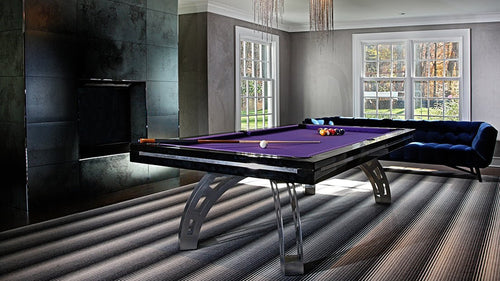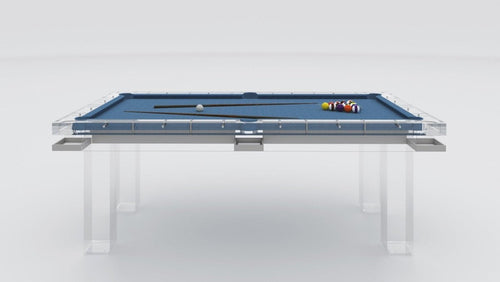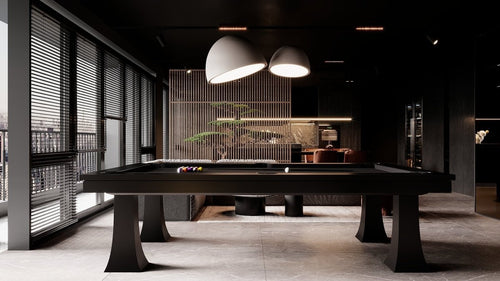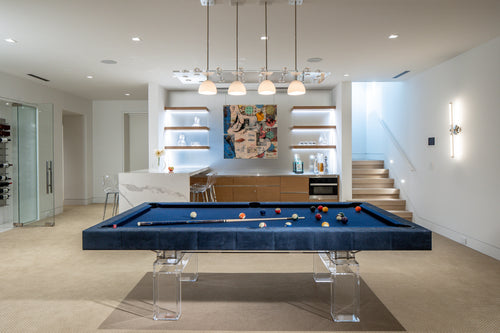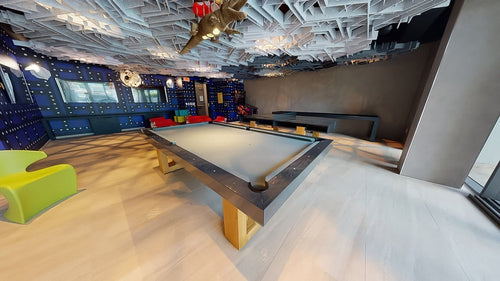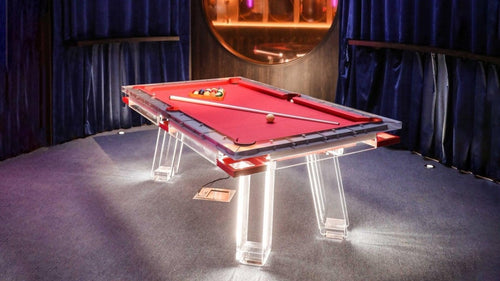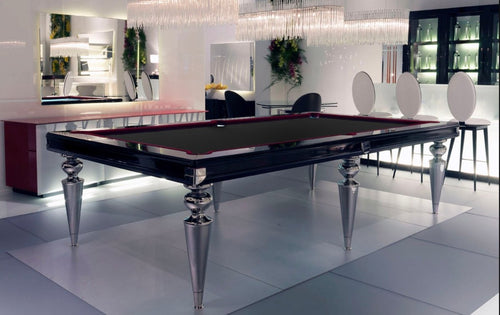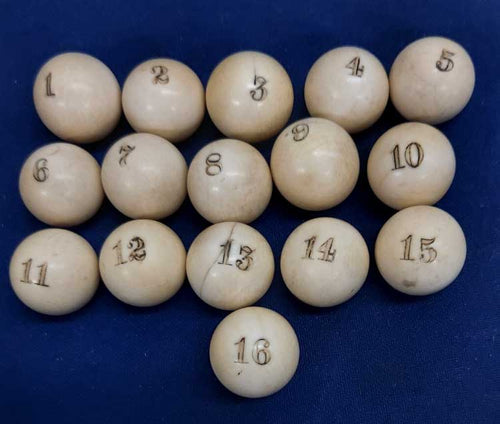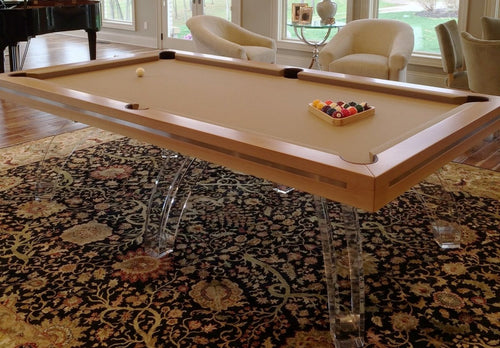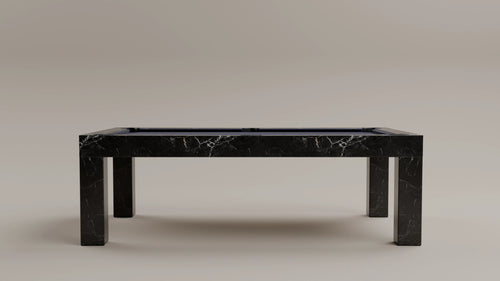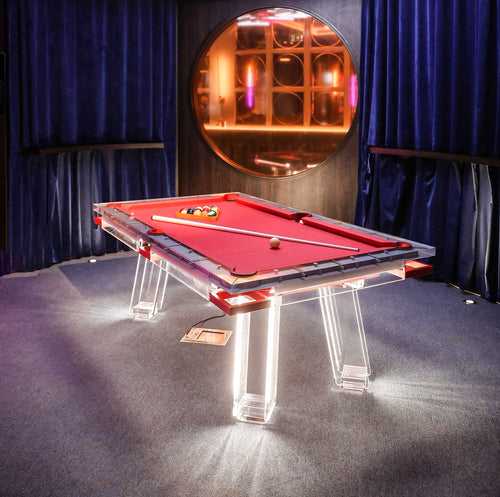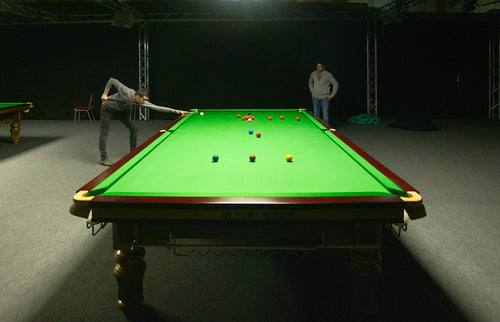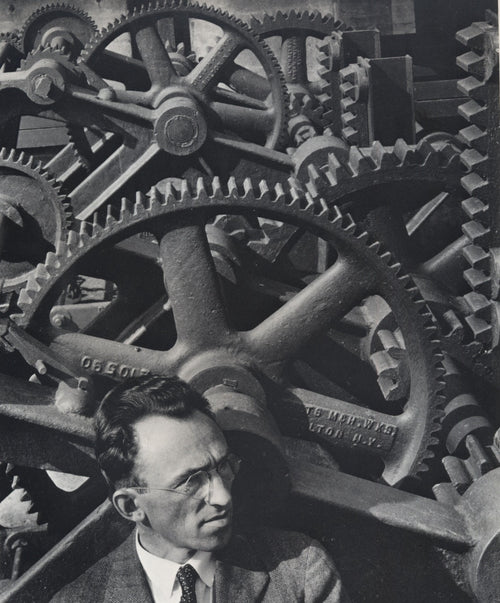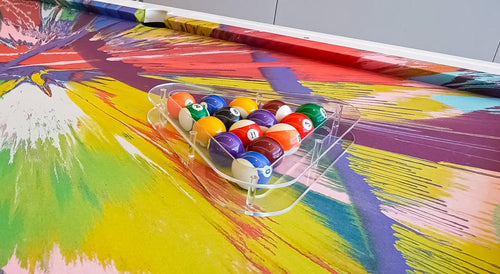Enjoy our modern designs
Estimated Read Time: 6 mins | Updated:
In this concise guide we'll cover everything you need to know about air hockey — from the basics to advanced strategies — so you can cut the noise and focus on the game. Use the table of contents to jump to the sections you find most useful.
What Is Air Hockey?
Air hockey is an arcade-style tabletop game where players use handheld paddles (mallets) to hit a lightweight puck across a smooth surface. The table’s air system creates a thin cushion of air that reduces friction, allowing the puck to glide quickly. The objective is simple: score by getting the puck into your opponent’s goal while defending your own.
Essential Equipment for Playing Air Hockey
Basic gear you’ll need:
- Air hockey table: Standard arcade sizes vary; smaller home models are also available.
- Paddles (mallets): Standard and professional options — choose grips that suit your style.
- Pucks: Lightweight plastic discs; some tables use slightly different puck profiles for improved glide.
- Scoreboard: Built-in or separate electronic counters are common.
- Extras: Replacement pucks, spare paddles, and protective covers.
Setting Up Your Air Hockey Table
Checklist to get the table ready:
- Location: Place the table in a well-lit, open area with room for players to move.
- Level surface: Ensure the table sits flat — uneven tables skew puck behavior.
- Assemble correctly: Follow manufacturer instructions and secure all fasteners.
- Air system: Connect and test the blower; check that air outlets are clear and evenly distributed.
- Test puck glide: Slide the puck end-to-end to confirm smooth movement; adjust airflow or level if needed.
Official Air Hockey Rules
Core rules used in most leagues and tournaments:
Starting Play
- Face-off: Players place paddles on their side; puck starts in the center.
- Possession: After a goal, the player who scored serves next (rules vary by league).
Legal Play
- Paddle use only: Players may only strike or block the puck with the paddle.
- No physical contact: Touching the opponent or their paddle is illegal.
- Shot clock: Typically a 5-second limit per shot or face-off may be enforced.
- Illegal serves/shots: If a serve or shot doesn’t cross into the opponent’s half as required by specific rules, possession changes.
Game Length & Winning
- Standard target: First to 7 goals is common; competitive matches can go to 10 or 11.
- Time-based: Some events use fixed time periods with the highest score winning.
- Tiebreakers: Sudden death or extra periods decide ties.
Scoring & Game Structure
Each goal equals one point. Matches are typically structured as first-to-X goals or timed periods. Tournament formats vary — always confirm the organizer’s rules before play.
Air Hockey Terminology
- Puck: The flat disc used in play.
- Paddle / Mallet: The handheld piece used to strike the puck.
- Face-off: Start or resume play.
- Bank shot: Using the side rails to change the puck’s path.
- Stop-shot / Block: Defensive placement to halt or intercept the puck.
- Slapshot: A fast, hard offensive strike.
How to Play Air Hockey: Step-by-Step
Grip & Stance
- Hold the paddle comfortably — firm but relaxed grip.
- Stand balanced with knees slightly bent and feet shoulder-width apart for quick lateral movement.
Basic Shots
- Straight shot: Direct, controlled strike aimed at the goal.
- Bank shot: Use rails to change the puck’s angle and catch the opponent off guard.
- Stop-shot: Place the paddle to stop or trap the puck, resetting play.
Offense & Defense
- Quick slaps: Short, rapid strikes keep pressure on the opponent.
- Deception: Fake directions to create openings.
- Positioning: Keep your paddle between the puck and your goal; control rebounds.
Advanced Tips & Strategies
Take your game to the next level with these focused habits:
- Master paddle control: Practice subtle angles and micro-adjustments to control puck trajectory.
- Improve reaction time: Drills and reflex exercises help you respond to fast rebounds.
- Use the full table: Force opponents to cover more ground and open lanes for scoring.
- Study opponents: Observe patterns and exploit predictable habits.
- Stay composed: Calm decision-making beats panic during high-pressure exchanges.
Maintenance & Care for Your Air Hockey Table
- Regular cleaning: Wipe the surface with a soft, dry cloth to remove dust and debris.
- Check pucks: Replace warped or heavily scratched pucks for consistent play.
- Paddle care: Store paddles flat and avoid heat which can warp grips.
- Air system checks: Inspect the blower and air ports periodically to ensure even airflow.
- Cover when not in use: Protects the playing surface and electronics.
Choosing the Right Air Hockey Table
Key factors when selecting a table:
- Budget: Set a price range — commercial-grade tables cost more but last longer.
- Space: Measure your area and allow room for player movement.
- Air system quality: Look for consistent, even airflow across the table surface.
- Durability: Solid frame, quality playing surface and reliable electronics matter.
- Features: Built-in scoring, adjustable settings, and lighting are nice-to-haves.
- Brand & warranty: Choose reputable manufacturers with good customer support.
Frequently Asked Questions
Can I play air hockey alone?
Yes. Many tables have single-player modes or you can practice drills to improve reflexes and accuracy.
How often should I replace pucks?
Replace pucks once they show significant wear, warping, or deep scratches — typically after heavy use or every few years for casual home tables.
Is air hockey safe for kids?
Yes. It’s non-contact and improves coordination. Supervise young players to prevent accidental paddle strikes and ensure safe play.
What health benefits come from playing?
Air hockey improves hand-eye coordination, reflexes, and tactical decision-making. It’s also a light physical activity that promotes social interaction.
Conclusion
Air hockey is fast, accessible, and skill-driven. With the right table, routine maintenance, and deliberate practice of control and positioning, you’ll get more fun and better results from every session. Gather friends, set clear rules, and focus on clean mechanics — the rest will follow.
Ready to upgrade your game room?
Explore our selection of premium game tables and accessories to find the right fit for your setup.
Browse Game Tables


